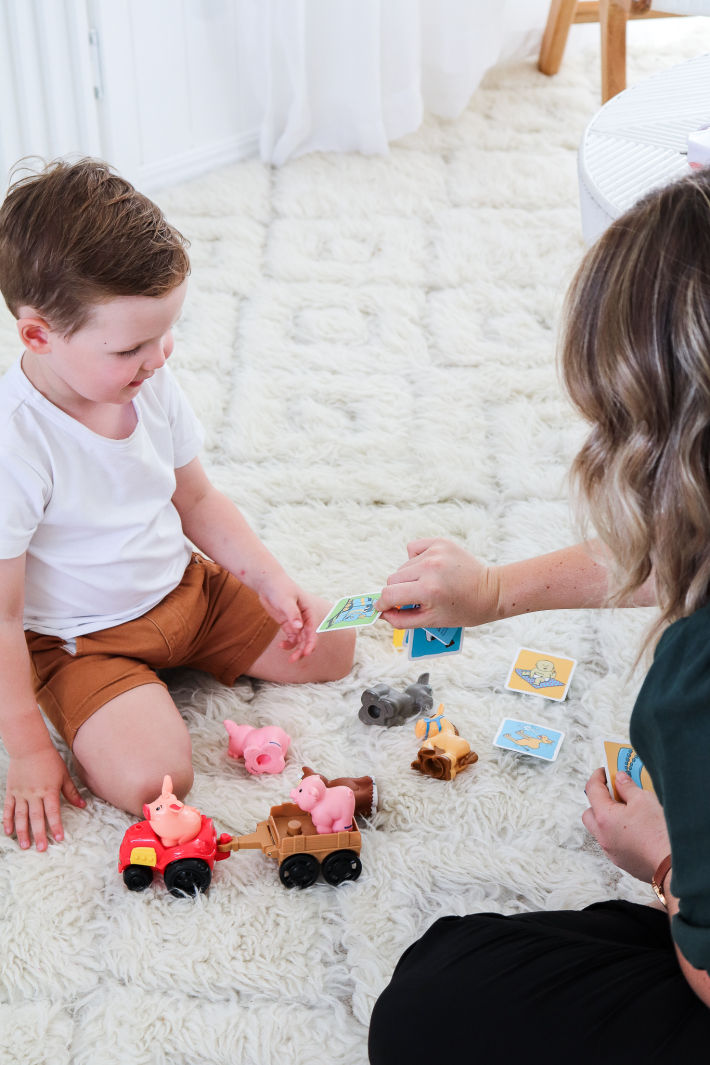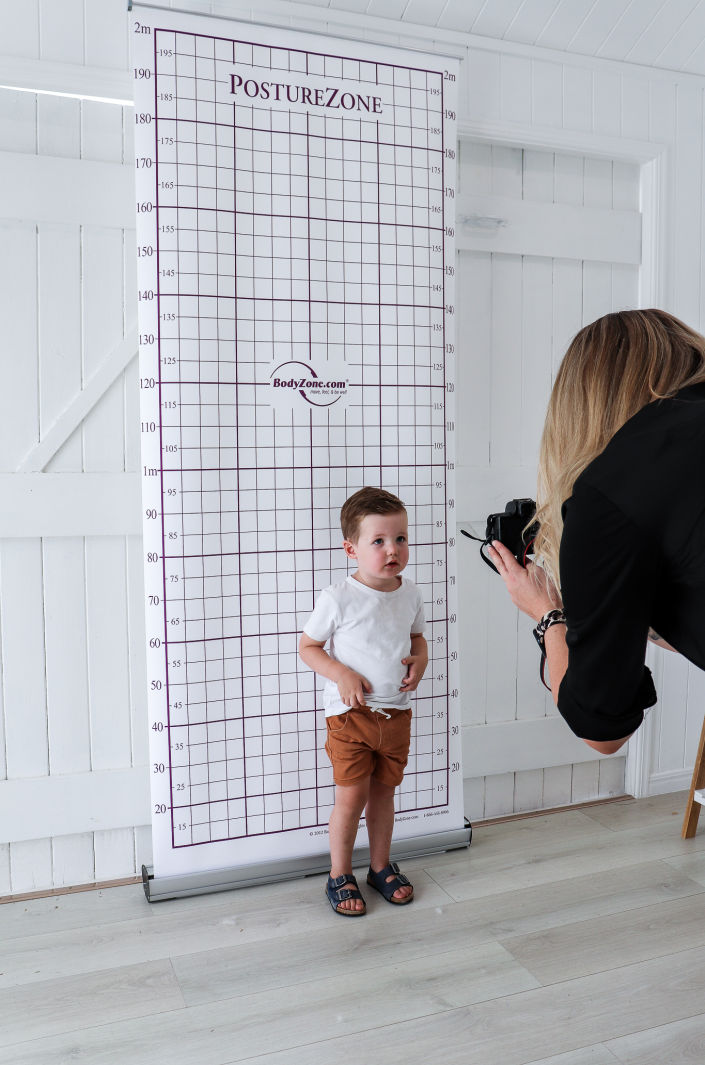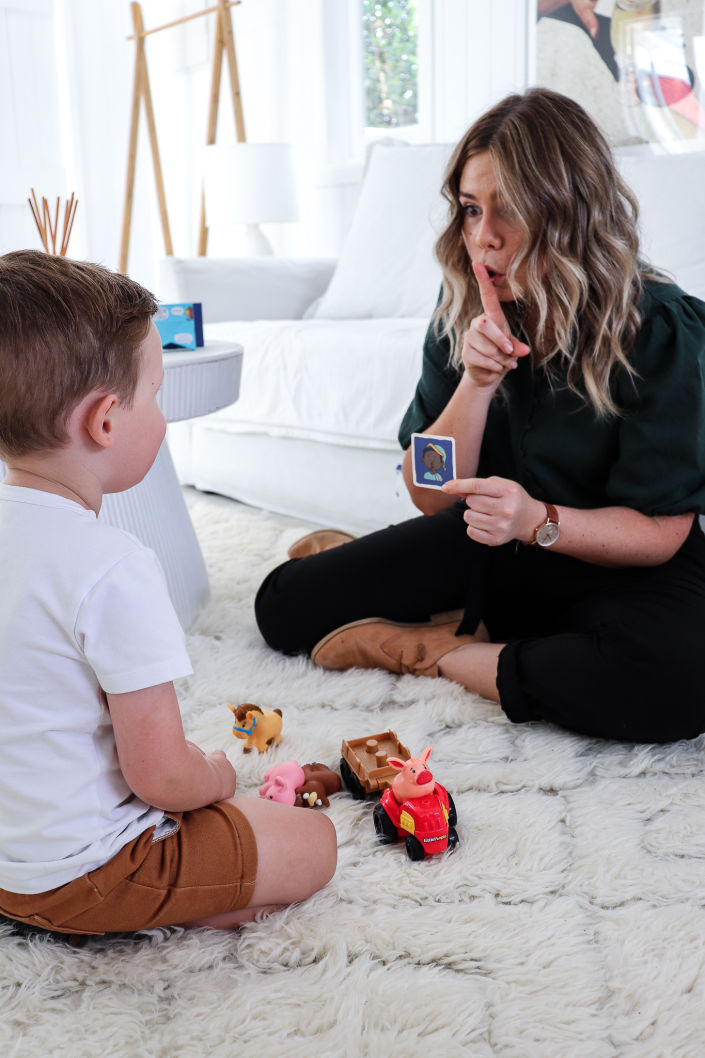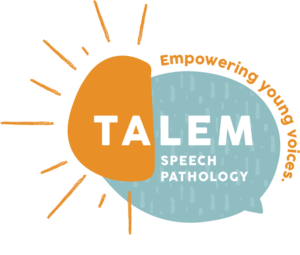OUR SERVICES
We provide speech pathology and orofacial myology assessments and intervention for
children aged 18 months to 12 years and up to 18 years on a case by case basis.
Services are accessible through NDIS funding, Medicare or private payment.
Talk to us today to find the best option.
Click on a button to find out more about the services we provide. It is important to flag your concerns with a speech pathologist as early as possible. Please contact us if you have any concerns regarding your child’s development.
INITIAL CONSULT
What is an Initial Consult?
An initial consult is an opportunity for the speech pathologist to get to know you and your child. The speech pathologist will find out about your child’s development, strengths and difficulties in different ways. This may include:
- Taking a case history – Prior to the consult, you will be sent a case history document to fill out which will ask you questions about your child’s development. This saves a lot of time during the consult and allows the speech pathologist to ask any follow up questions. It doesn’t matter if you are unsure of some questions. The more information that you can provide will help us to understand your child better.
- Informal Assessment – the clinician will use games and play with your child whilst taking note of certain skills such as turn taking, their attention and whether they are able to follow directions.
- Formal Assessment – your child may be encouraged to look at some pictures with the clinician. The clinician may ask the child to name or describe pictures and point to certain objects. These assessments will provide a score so that the therapist can compare the child’s performance with children of a similar age.
- Play and Conversation – the clinician will try to get to know your child by talking to them and joining in with their play. This will help the clinician to see how they communicate and whether they use any gestures or expressions to help them get their message across. The clinician may be interested in how the child plays and what types of toys and activities they enjoy.
- Observation – watching the child and how they communicate with their parents/carers or siblings may also be helpful for the clinician to see. If your child is quiet, the clinician may want to observe them for a while, allowing them to feel comfortable first and then approach the clinician when they feel ready.
Initial consults go for one hour, and you will have the opportunity to ask the speech pathologist questions too. At the end of the session the clinician may make some suggestions about what the next steps could be for your child and how to support their speech, feeding and facial, language and/or literacy development.
The speech pathologist may need to book in further assessment sessions or require more time to look at assessment findings in detail, but they will be able to provide you with some advice in the meantime. You may also be given referrals to see additional services, such as an Ear Nose and Throat (ENT) specialist, airway focused orthodontist, occupational therapist, behavioural optometrist, physiotherapist, and/or osteopath.
Please advise your speech pathologist if you would like an assessment report written.
OROFACIAL MYOLOGY
Orofacial Myology targets speaking, eating, drinking, breathing and sleeping better.
Orofacial Myology is the assessment and treatment of the muscles of the face and how improper use of these muscles impact speech, dentition, chewing, and swallowing. It complements speech pathology intervention, providing a holistic approach to therapy.
At Talem Speech Pathology, our speech pathologists have undergone additional and extensive training in the orofacial myology field. We pride ourselves on having a strong referral network to provide the best care for your child.
The four main goals of orofacial myology therapy are:
1. Nasal breathing
2. Tongue in proper resting position
3. Mouth closed and lips sealed
4. Proper swallowing
This type of therapy is appropriate for children ages 4 and older, however, if you have concerns about your child’s sleep and/or speech development, early assessement from 18 months is recommended.
Symptoms That Indicate an Orofacial Myofunctional Disorder:
- Tongue thrust
- Mouth breathing
- Misaligned teeth and/or bite
- Snoring/ sleep apnea
- Difficulty going to sleep, waking during the night, restless sleep, night terrors, sleep walking and/ or talking
- Jaw pain
- Teeth clenching / grinding
- “Picky” eating
- Headaches
- Difficulty concentrating
- Fatigue / tiredness during the day
What can lead to an Orofacial Myofunctional Disorder?
In most cases it is the result of a combination of factors, and may result from any of the following:
- Improper oral habits, such as thumb or finger sucking, dummy, blanket, etc.
- Habits such as nail biting, cheek and lip biting, chewing of clothes and grinding of teeth
- Restricted airway, which can be due to enlarged tonsils or adenoids, a narrow or vaulted palate, a large tongue, an oversized uvula and/or allergies
- Structural or physiological abnormalities such as a restrictive lingual frenum (tongue tie)
- Neurological or developmental abnormalities
- Hereditary predisposition to some of the above factors
Tongue Ties
Tongue tie (also known as ankyloglossia), is a condition that restricts the tongue’s normal movement.
A tongue tie develops in utero during normal development of the tongue and floor of mouth and is present from birth. By definition a tongue tie is a lingual frenulum in the midline between the under surface of the tongue and the floor of mouth that restricts normal tongue movement. The frenulum should not be described as a tongue tie unless it restricts tongue movement and the restriction contributes to a functional problem.
At Talem Speech Pathology we complete comprehensive evaluations for tongue tie, focusing on the way that restriction impacts speaking, eating and breathing properly.
Sucking (thumb, finger, dummy) or biting habits (nails, lips)
These habits can contribute to irregular facial development resulting in the malalignment of teeth and other speech and medical problems. What many people do not realise is that this behaviour can continue well into adulthood if not addressed early in life.
At Talem Speech Pathology we offer programs and advice for kids of all ages to help your child quit their habit.
SPEECH SOUNDS
Speech refers to the way we say sounds in words.
At Talem Speech Pathology we support speech sound delays and disorders by conducting assessments and therapy. If your child has difficulty producing a sound (articulation), or swapping one sound for another (phonological errors), we can identify these errors, and work with your child towards clear and confident speech.
How well should someone understand a child’s speech?
Speaking in short sentence to a non-familiar person, your child is understood:
-
-
- 3 year old: approximately 68%
- 5 years old: approximately 78%
- 4 years old: approximately 86%
- 5 years old: approximately 91%
- 5 years old: approximately 94%
- 6 years old: approximately 97%
-
A child should be at least 30 to 36 months old before we begin to devote a lot of time to analysing and treating speech intelligibility. By 4 years of age, children should be understood by almost all the people they talk with, including unfamiliar people.
Please feel free to contact us to discuss any concerns with your child’s speech development.
Articulation Errors Vs. Phonological Delays and Disorders
Understanding your child’s speech errors individually, is essential to the correct treatment approach. Please note: it is possible for your child to exhibit both types of speech errors. Some errors are known as age appropriate errors. Click here for more information about speech sound development.
Articulation
Articulation is the process by which sounds, syllables, and words are formed when your tongue, jaw, teeth, lips, and palate alter the air stream coming from the vocal folds. When a child cannot produce or distorts an age-expected sound/s, it draws attention away from the speaker’s message.
Articulation disorders are motoric errors that can occur among people of any age; however, they are most common in children whose articulators have not developed properly. Common articulation errors that we treat include difficulty producing /s/ (frontal or lateral lisp), /r/, /l/ and “th.” At Talem Speech Pathology, we often treat articulation errors concurrent with an orofacial myology program.
Phonological Processes
A phonological process delay or disorder is a simplification of the sound system that also affects speech intelligibility. Students with phonological process problems demonstrate difficulty in acquiring a phonological system; involving organising the patterns of sounds in the brain and the output, not necessarily in the motor production of the sounds like articulation errors.
An example of a phonological process may be fronting, which is when back sounds such as /k/ and /g/ (produced by the tongue moving up in the back) are replaced with the front sounds /t/ and /d/ (made by the tongue coming up in the front). This may change a word like cat to tat; or goat to doat.
References:
Hustad, K.C., Mahr, T.J., Natzke, P., & Rathouz, P.J. (2021). Speech development between 30 and 119 months in typical children I: Intelligibility growth curves for single-word and multiword productions. Journal of Speech, Language, and Hearing Research. https://doi.org/10.1044/2021_JSLHR-21-00142
CHILDHOOD APRAXIA OF SPEECH (CAS)
What is Childhood Apraxia of Speech?
Childhood Apraxia of Speech (CAS) is a motor speech disorder that first becomes apparent as a young child is learning speech. For reasons not yet fully understood, children with apraxia of speech have great difficulty planning and producing the precise, highly refined and specific series of movements of the tongue, lips, jaw and palate that are necessary for intelligible speech.
CAS is distinguished from dysarthria in that it appears to be the planning and programming of movements rather than their execution that is impaired.
Children with apraxia are at high risk for having later language based academic difficulties (i.e., reading, writing, and spelling).
Diagnosis
CAS cannot be diagnosed until a child has the verbal imitation skills to participate in a dynamic motor speech assessment (i.e., a nonverbal child cannot be diagnosed with apraxia). Because Childhood Apraxia of Speech is a communication disorder (not a medical diagnosis), the most qualified professional to provide assessment, evaluation, and diagnosis is a certified speech pathologist.
A speech pathologist with post-graduate training and experience in assessing and treating motor speech disorders is the professional most qualified to diagnose CAS. Our speech pathologists at Talem Speech Pathology have further training in diagnosing and treating CAS.
Treatment
Speech pathology intervention is the only evidence-based treatment for CAS. In treatment for CAS, the focus is on movement patterns, not individual speech sounds (articulation). Children with apraxia CAN and DO make progress when speech pathology is based on the principles of motor learning.
At Talem Speech Pathology we are trained in four approaches including:
1) Dynamic Temporal and Tactile Cueing (DTTC)
DTTC is a treatment method designed specifically for children with severe CAS, especially those who were not successful with more traditional forms of therapy and has been used successfully with moderate CAS as well. DTTC is a motor-based approach, meaning it is designed to improve the brain’s ability to plan and program movements for speech, which most experts believe is the underlying cause of CAS.
2) The Nuffield Dyspraxia Programme (NDP3)
The NDP3 is a flexible, comprehensive assessment and therapy resource for the management of severe speech disorders. It is designed primarly for 3-7 year olds, however, can be adapted for younger or older children.
3) Rapid Syllable Transition Treatment (ReST)
ReST is an evidence-based treatment for treating children aged 4-13 who have a main diagnosis of CAS without many other complications. This treatment uses nonsense words – words that sound and read like real words, but do not have any meaning. This allows children to concentrate on their movements, lessens the need for working on old words which already have errors and allows clinicians to make words specifically for each child’s needs. A therapy block is 12 sessions, delivered either 4 days a week for 3 weeks or 2 days a week for 6 weeks. Each treatment session is 45-60 minutes long.
4) PROMPT
PROMPT (Prompts for Restructuring Oral Muscular Phonetic Targets) is an approach which utilises a tactile-kinaesthetic (touch and feel) approach. Research has shown the use of PROMPT has resulted in significant gains in changing motor behaviour, articulation, and speech intelligibility in children with CAS.
CLEFT PALATE
Cleft Palate and Speech
A working palate is essential for the development of speech. When the palate is repaired, the aim is to close the gap in the roof of the mouth, to repair the muscles in the soft palate and to lengthen the muscular part of the palate as much as possible to enable it to close firmly against the back and sides of the throat during speech.
Your child’s communication development can be monitored from birth by your cleft team at the hospital. The development of babbling is particularly important for babies with cleft palate as it helps the cleft team know how well the palate is working.
What happens if there are speech problems?
Speech pathologists who work with children with cleft palate have extra training to recognise and treat specific problems caused by a cleft palate. At Talem Speech Pathology, we can start working with your child around 18–24 months of age. By this time most children should have a number of recognisable words and a wide range of speech sounds.
Children with a repaired cleft may present with a speech sound disorder, which is when a child has trouble making specific sounds. “Cleft palate speech” refers to speech sound errors that are more common in kids with a cleft palate.
Some children who have had their palate repaired will have velopharyngeal insufficiency (VPI). This occurs when the soft palate is not long enough to reach the back of the throat to make a firm seal allowing air to escape through the nose during speech. This makes it difficult for the child to make certain speech sounds, especially those that require the palate to be in the closed position.
Speech may also be nasal and soft, and some children also develop speech sounds made in the nose or the throat which are not typical of their native language. These ‘cleft type’ speech sounds can make the child difficult to understand and they will need speech therapy.
The main goals to help children with “cleft palate speech” are to:
- Establish correct articulation (placement, manner, and voicing)
- Ensure there is good oral pressure during sound production
- Establish new motor speech patterns that replace speech sound errors
Please contact us with any questions you may have or to book an initial consult.
PROMPT
What is PROMPT?
PROMPT stands for: Prompts for Restructuring Oral Muscular Phonetic. It is a therapy approach that uses a unique philosophy and approach to assessment and treatment of speech delays or disorders. It is most known for being a tactile-kinaesthetic (touch and feel) approach where a speech pathologist places their hands on your child’s face to guide his/her jaw, lips, and tongue to move correctly to form words.
The process of evaluating a child’s movement is very complex and relies on extensive training in the PROMPT technique. Because of this, PROMPT is meant to be applied only by a PROMPT-trained clinician. Inaccurate PROMPTing could interfere with a child’s treatment and set back the progress they have already made. Our speech pathologists at Talem Speech Pathology are PROMPT trained.
Click HERE for a video explaining PROMPT.
How does PROMPT work?
PROMPT systematically determines where motor breakdowns occur using an assessment tool and a Conceptual Framework which helps determine priorities in treatment.
Communication is an interaction between the Social-Emotional ability to connect with others, Cognitive-Linguistic understanding of language, and Physical-Sensory ability to produce certain words. If any of these areas are disordered or delayed, the client’s ability to communicate is impacted.
PROMPT Assessment
PROMPT assessment evaluates how a child functions across the three domains (Social-Emotional, Cognitive-Linguistic, and Physical-Sensory). Your concerns as a caregiver are important and will provide valuable input to the treatment your family member will receive.
PROMPT assessment begins with a tool called the Systems Analysis Observation (SAO) to understand where motor breakdowns occur. A motor breakdown is the client’s difficulty moving their jaw, lips, and tongue that results in challenges being understood. Your speech pathologist will observe your child and then transfer the SAO results to a unique tool called the Motor Speech Hierarchy (MSH) to help determine which stages to prioritise in treatment.
Evaluations usually take 1-2 hours and are followed by a discussion of the results and recommendations.
PROMPT Treatment
Dependent on your child’s goals, PROMPT implements a number of support strategies during treatment sessions to provide your child with the best conditions for learning.
These strategies can be physical, like PROMPTing to help them move accurately when producing a word, or taking a break to do some physical activity. There are also important Cognitive-Linguistic strategies, like matching the therapy exercises to the child’s age and level of understanding, and providing clear and consistent instructions. Lastly, PROMPT also uses strategies for supporting the Social-Emotional aspects of treatment, like providing positive reinforcement.
Different elements of PROMPT are used including:
Motor phoneme warm-up: clinicians use this to help your child focus his/her attention on moving the jaw, lips, and tongue (articulators) accurately when producing words, phrases, and sentences. During this time, they provide multiple practice opportunities to help your child achieve accurate motor movements when producing that speech.
Mapping: A PROMPT-trained speech pathologist uses their hands to shape the articulators which links motor movements to the understanding and use of words. A clinician may PROMPT the client but does not expect them to say the concepts out loud.
Reciprocal turn-taking is another crucial part of PROMPT treatment. Throughout a session, the SLP is doing the same thing as the client – saying the same words, following the same rules, and doing the same activities.
“On-line” shaping is a clinical term to describe the process of helping the client move their jaw, lips, and tongue correctly when speaking. PROMPT-trained speech pathologists will watch a child say a word or phrase and determine if his/her physical movement was correct. The clinician will then use their hands to correct or reinforce that movement. This occurs throughout the session, ensuring that the client is successful and is constantly improving his or her motor movements. You can click HERE and HERE for examples.
The Importance of Functional Speech
We focus on word targets that are relevant and have meaning to your child so they are connected and motivated to what they are learning. Your speech pathologist will come up with a motivating activity or game where the word can be repeated. Then the clinician will use his or her hands to support the motor movements as the client practices saying those words. Learning new motor skills takes a lot of practice and family members are essential for providing support.
Your speech pathologist will choose specific words (lexicon) to target the motor patterns a client needs experience in when using functional speech interactions. For instance, if a client tends to speak with a clenched jaw or restricted jaw opening, the speech pathologist will choose words containing sounds such as, ‘ah’. Some target words and phrases might be ‘on’, ‘mama’, ‘pop’, or ‘all gone’.
FEEDING
Medical, developmental, nutritional, social or emotional factors can all contribute to feeding problems. Through a comprehensive assessment, Talem Speech Pathology works to understand the root of the feeding difficulty and any areas that may be contributing to feeding or swallowing issues. An individualised treatment plan is then developed and implemented in partnership with the family and any other health professionals involved.
Talem Speech Pathology has experience in toddler feeding problems (1-3 years) as well as earing and swallowing difficulties in preschool and school-age children (3-12 years).
Some of the feeding problems that we work with include:
- Coughing, choking or gagging on fluid or food
- Difficulty transitioning to solids, lumps or finger foods
- Chewing or oral motor problems
- Fussy, picky, anxious or selective eating
- Oral aversions or feeding aversions
- Poor endurance and fatigue
- Stressful mealtimes
- Tube feeding, tube dependency, tube weeing
LITERACY
Literacy encompasses reading, writing and spelling.
At Talem Speech Pathology, we use evidence-based, synthetic-phonics programs to target literacy. We tailor each therapy program to suit your child; working our way up from their level to achieve long term literacy goals.
The Sounds-Write Approach
At Talem Speech Pathology we use the Sounds Write approach. It is a highly structured, multi-sensory, incremental and code-oriented, instructional approach which provides fast and effective teaching for children at all levels.
The programme provides lesson plans that are clearly structured and easy to follow within a systematic, synthetic phonics programme. It teaches all key elements of conceptual understanding, factual knowledge, and the three essential skills of blending, segmenting and phoneme manipulation necessary for learning to read and spell and it does so on a daily basis until all children achieve the automaticity that underlies the fluency of every successful reader.
Click HERE for a video introduction on Sounds Write
Support Your Child at Home
Help your child to read and write is an online course in two parts – and the first part is free! It is aimed specifically at parents and carers who are interested in putting their children on the first steps to literacy. Part 1 covers the first seven units of the Initial Code, and Part 2 covers units 8 to 11 inclusive.
You can click HERE to access the course.
LATE TALKERS
A late talker is a toddler between 18-30 months old who has limited spoken vocabulary for their age, while having a good understanding of language, as well as typically developing play, motor, thinking and social skills.
At Talem Speech Pathology, we encompass parent coaching as our number one priority, as we want to empower YOU to build your child’s language skills.
If you have any concerns regarding your child’s development, please contact us. We are happy to discuss your child’s communication, and if needed we may recommend an initial consult. At times, this is all that is needed to start supporting your child at home.
Please remember, all children develop at their own individual rates. They learn skills at slightly different times, and there is a large “average” or “typical” range of development for children. Although it is hard, try not to compare your child with other children.
Click HERE to access more information on communication milestones from Speech Pathology Australia and HERE to for more information from the Hanen Website.
How can I support my child’s speech development?
Parents play an essential role in encouraging your baby’s speech and language development and they learn best by interacting with you, family, friends and early childhood educators. Talking with your baby is very important. Don’t expect your baby to copy your sounds to start with – they will be listening, watching and learning. You should respond to your child’s early attempts to make sounds with praise and encouragement.
ALLIED HEALTH ASSISTANT PROGRAM
An Allied Health Assistant (AHA) is someone who is studying, or has completed a Cert IV in Allied Health Assisting with specific Speech Pathology elective subjects, or is studying Speech Pathology at university.
An AHA program is tailored to each individual whether you are a new or existing client.
What are the benefits of working with an AHA?
- This is a great way to commence intervention, rather than being on a waitlist.
- Your AHA works alongside your speech pathologist by providing therapy sessions working toward your child’s goals.
- You may be able to increase how frequently you access therapy services for a fraction of the cost.
- Our AHA can make resources specific to your child – including visuals and home programs.
At Talem Speech Pathology, you will work with our AHA, Jodie. Click HERE to learn more about her. Contact us if you would be interested in using the Allied Health Assistant service.
PREP READINESS SCREENER
Preparing your child for the exciting journey into Prep school is a significant milestone in their early education. To ensure a smooth transition and a successful start, our Prep Readiness Screener is a helpful tool to provide insight to their development.
What is a Prep Readiness Screener?
A Prep Readiness Screener is a comprehensive assessment designed to evaluate your child’s readiness for formal education, specifically in the prep or kindergarten setting. It delves into various aspects of their development to ensure they are well-prepared to thrive in the classroom.
What Does It Assess?
Our Prep Readiness Screener covers a range of essential areas, including:
- Language and Communication Skills: Assessing your child’s ability to express themselves and understand others.
- Speech: Evaluating their ability to produce speech sounds in words that allow for clear speech.
- Pre-literacy Skills: Evaluating their readiness for reading and writing activities.
- Physical and Emotional Resilience: Identifying their adaptability and emotional well-being.
- Previous Educational Experiences: Understanding their prior exposure to daycare or kindergarten.
- Airway and Sleep Concerns: Addressing potential issues that may affect their readiness.
Why is It Important?
A Prep Readiness Screener empowers both parents and educators with valuable insights. It helps parents understand their child’s strengths and areas for improvement, allowing them to provide targeted support. For educators, it aids in tailoring teaching methods to meet each child’s unique needs, ensuring a smooth and successful transition to formal education.
What Does It Entail?
- A case history, gathered prior to the assessment.
- 1 hour face-to-face assessment in clinic
- A report outlining the assessment results and recommendations.
- A 10 minute follow up phone call to outline results and recommendations
At Talem Speech Pathology we are committed to ensuring your child’s success. Our Prep Readiness Screener is a vital step towards creating a strong foundation for their educational journey, setting them up for a bright and promising future.
For more information, contact us by filling out an enquiry form, by calling on 0434 226 599, or emailing us at info@talemspeech.com.au





CONTACT US TODAY AND REQUEST A CONSULTATION
ENQUIRE NOWPHONE 0434 226 599
EMAIL info@talemspeech.com.au
10B / 2-4 Flinders Parade North Lakes 4509
